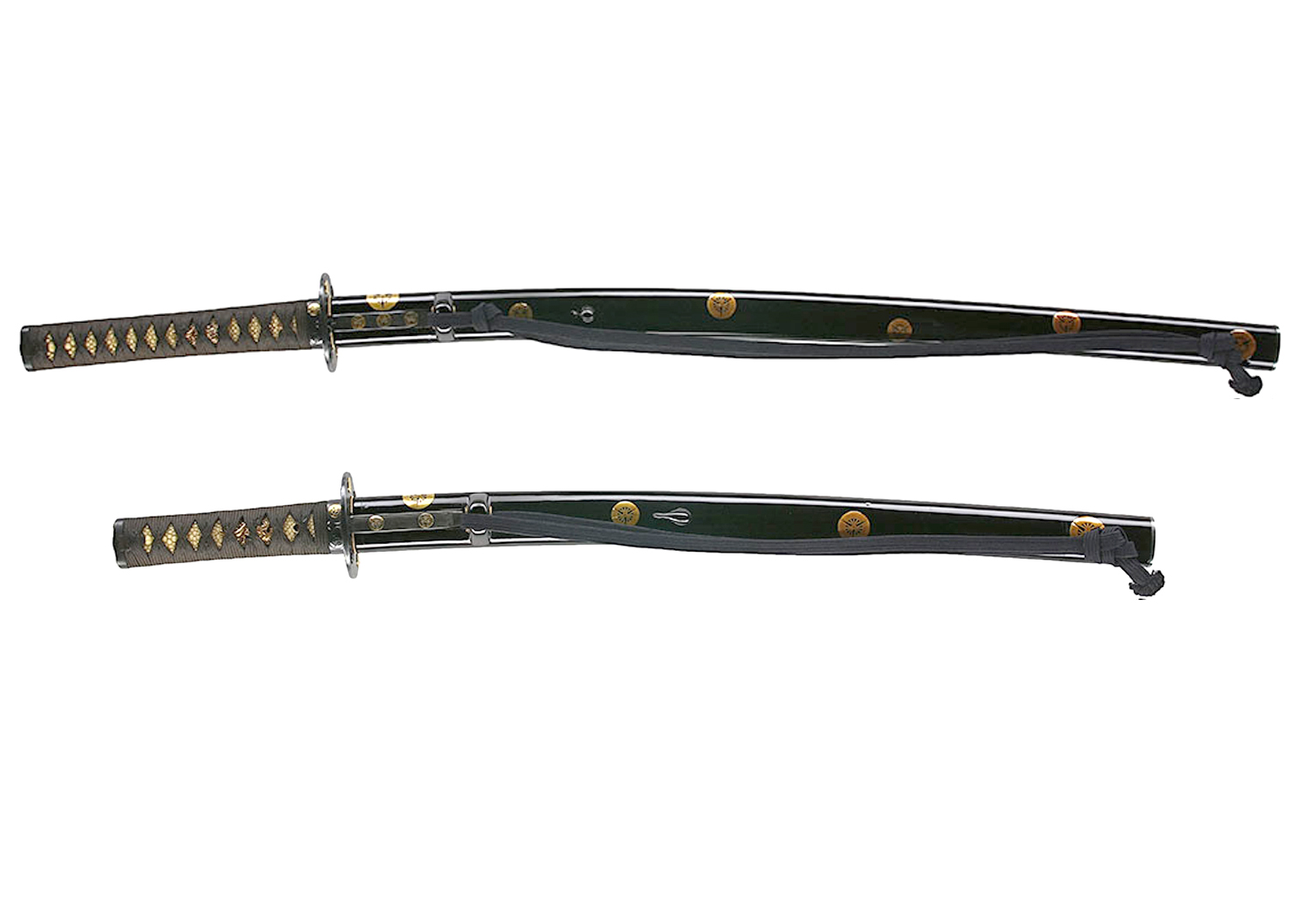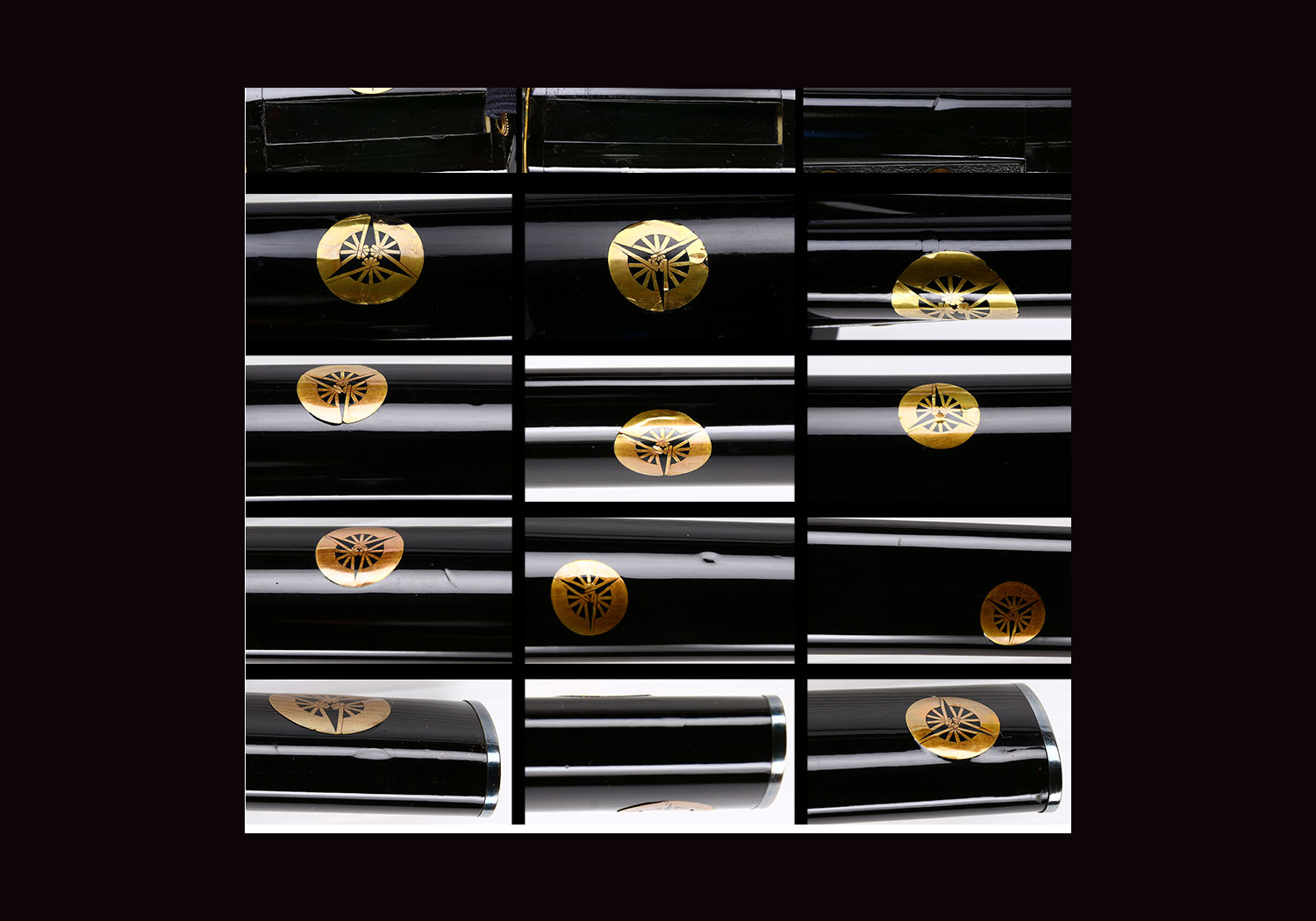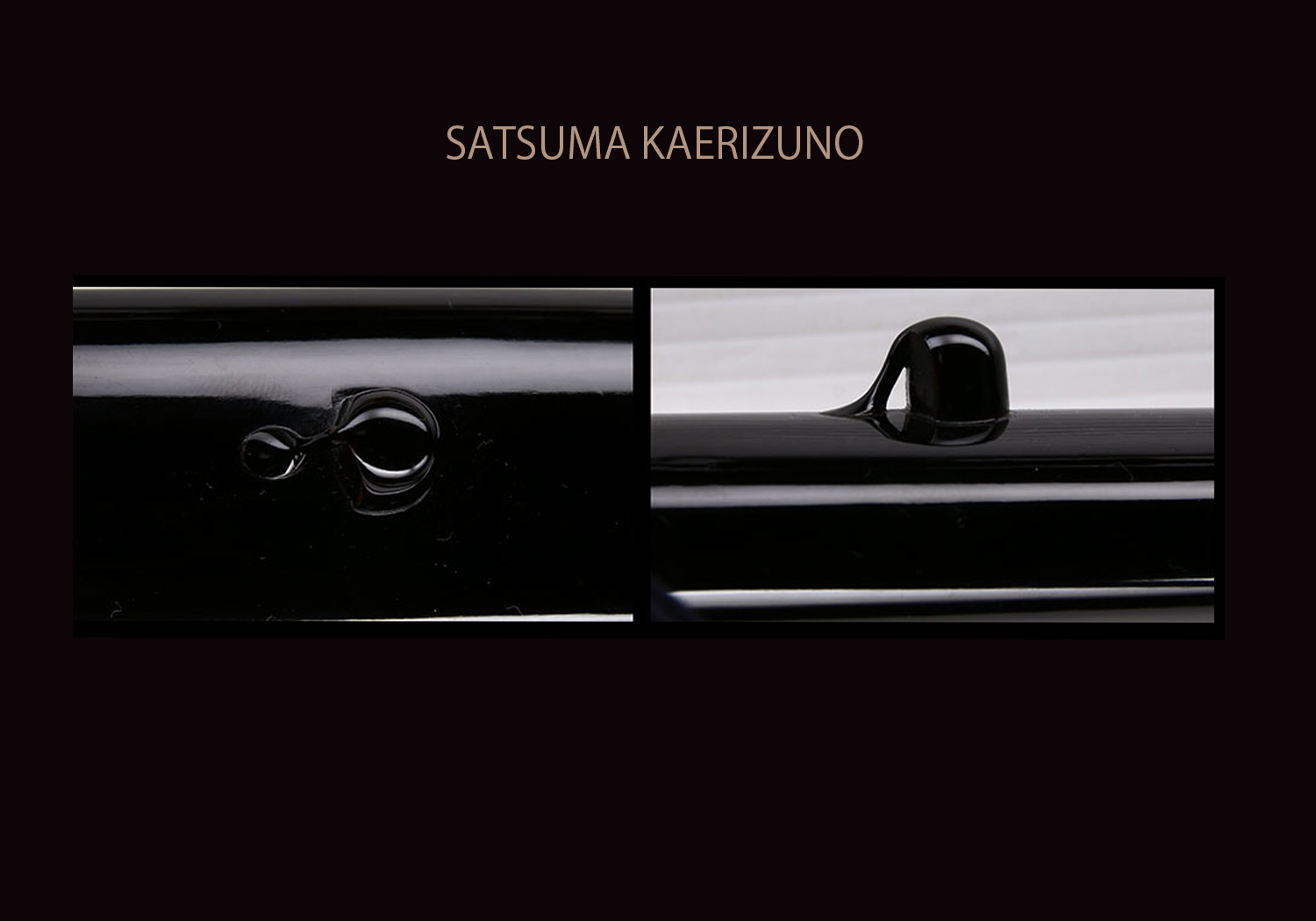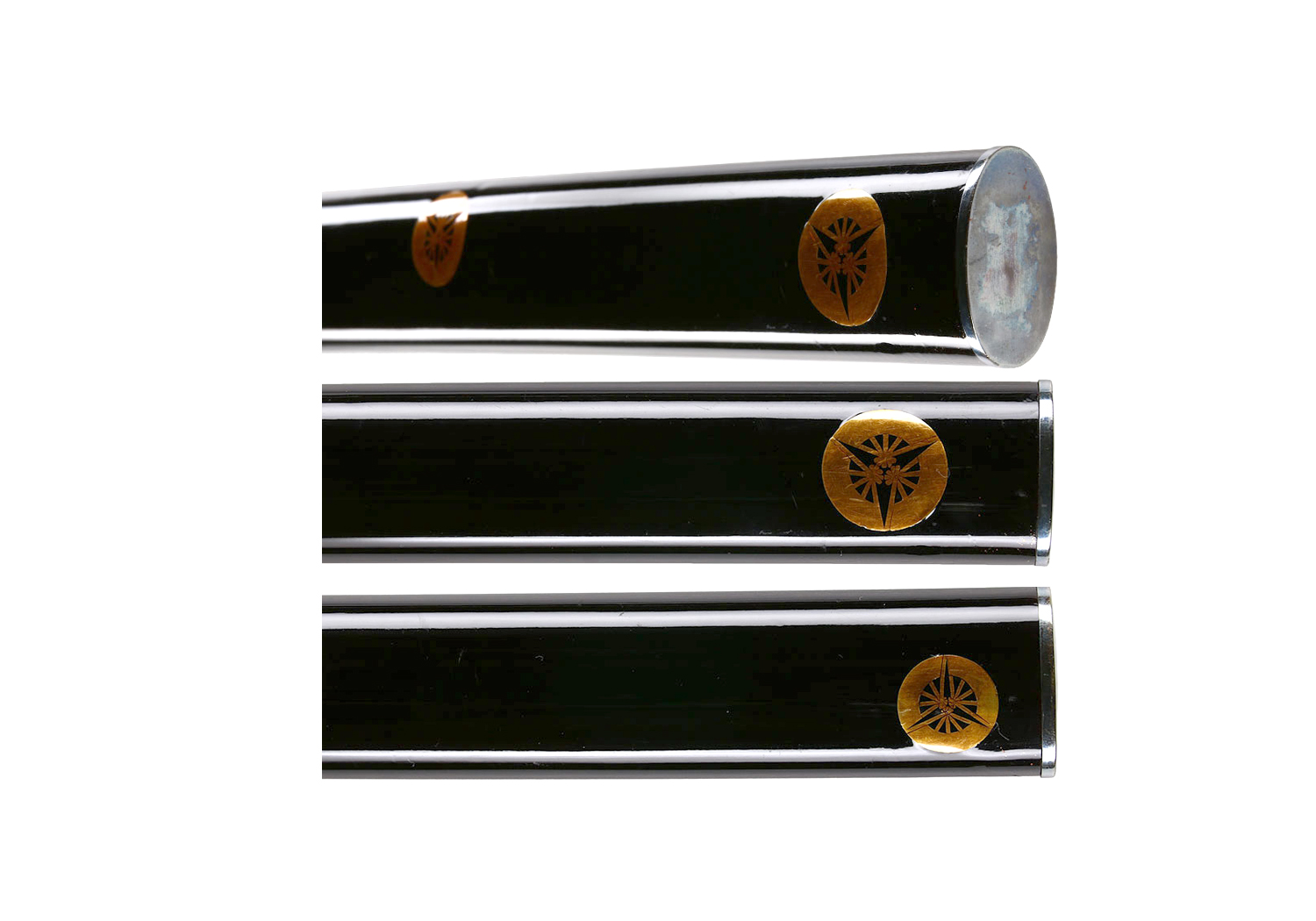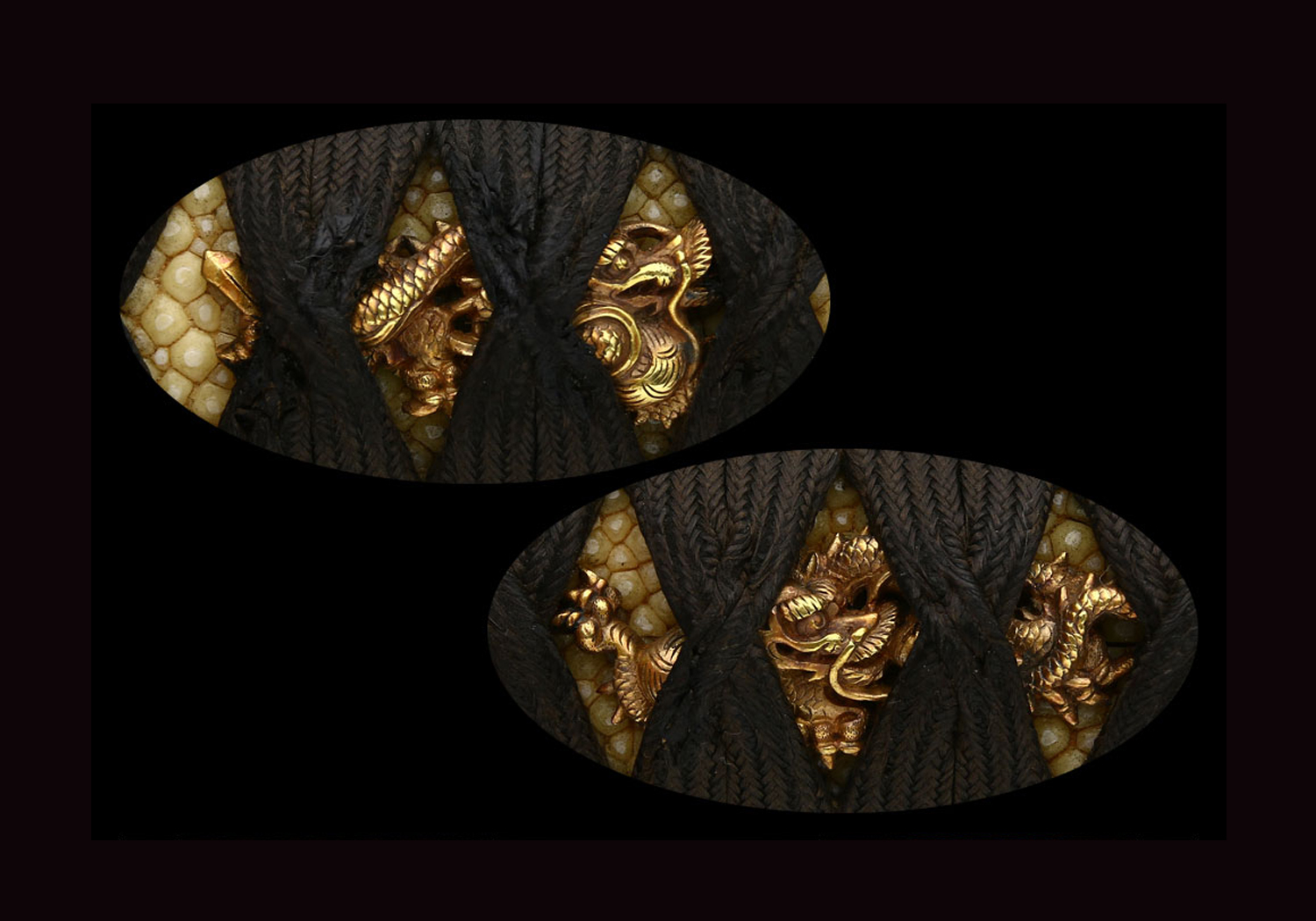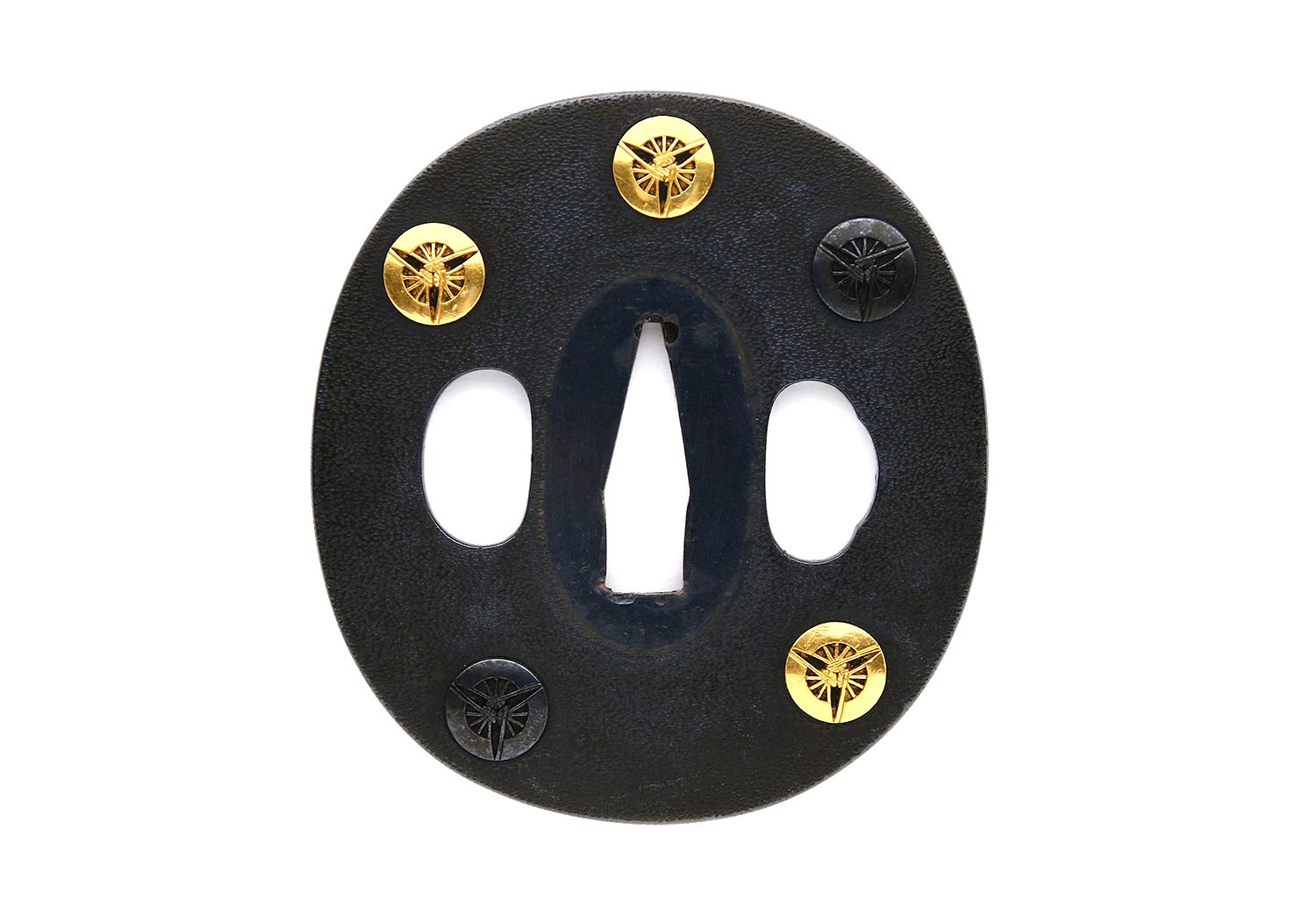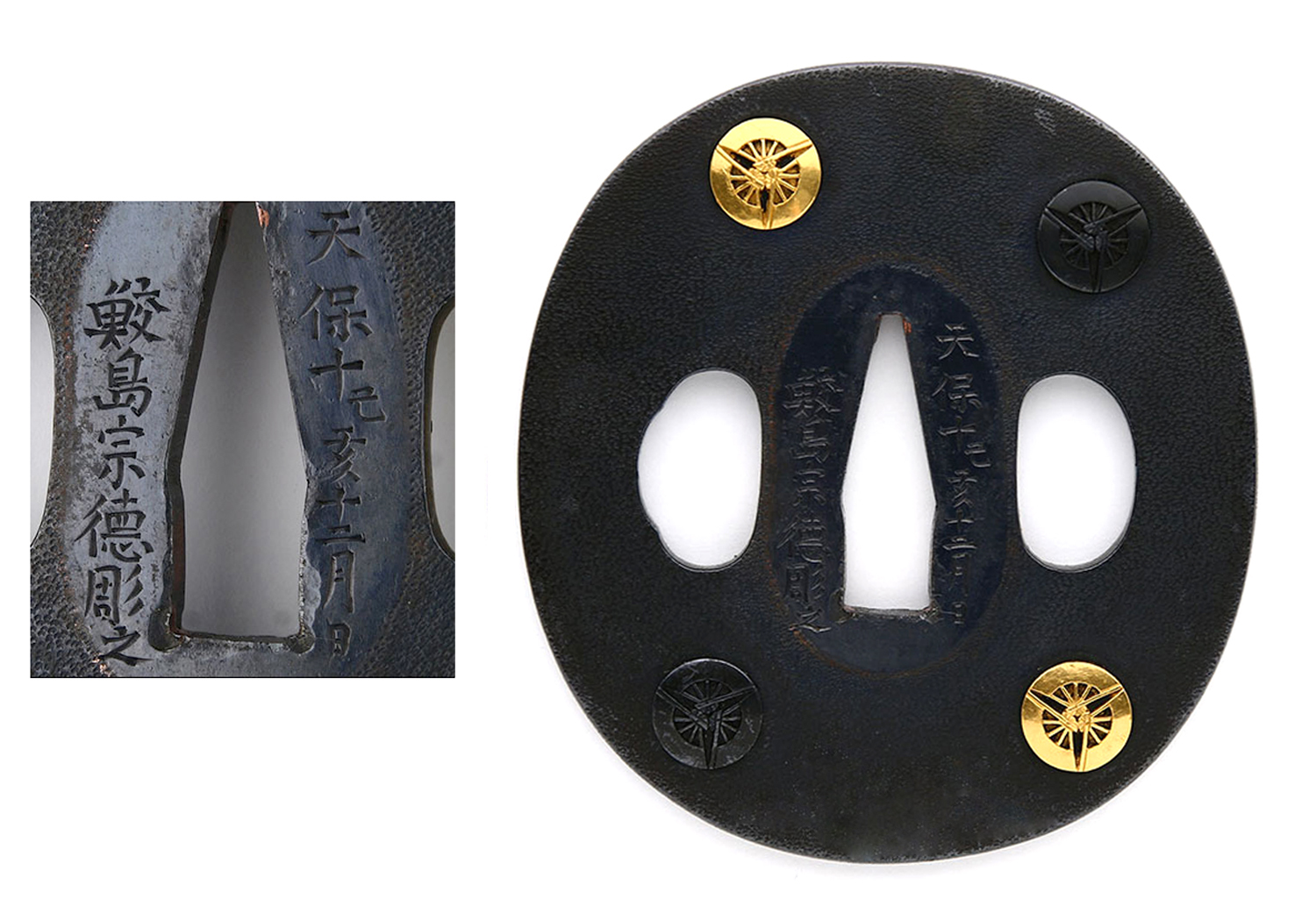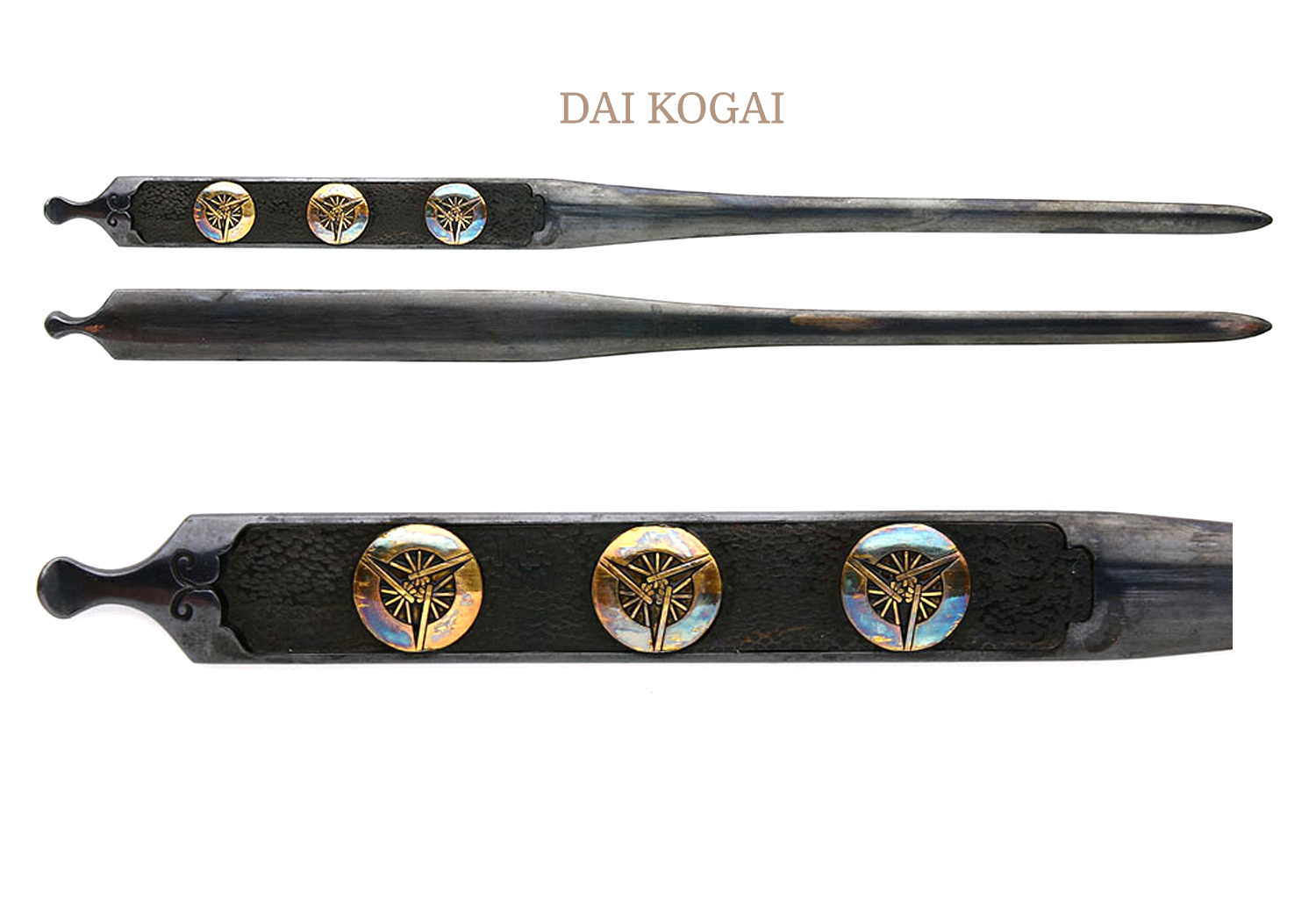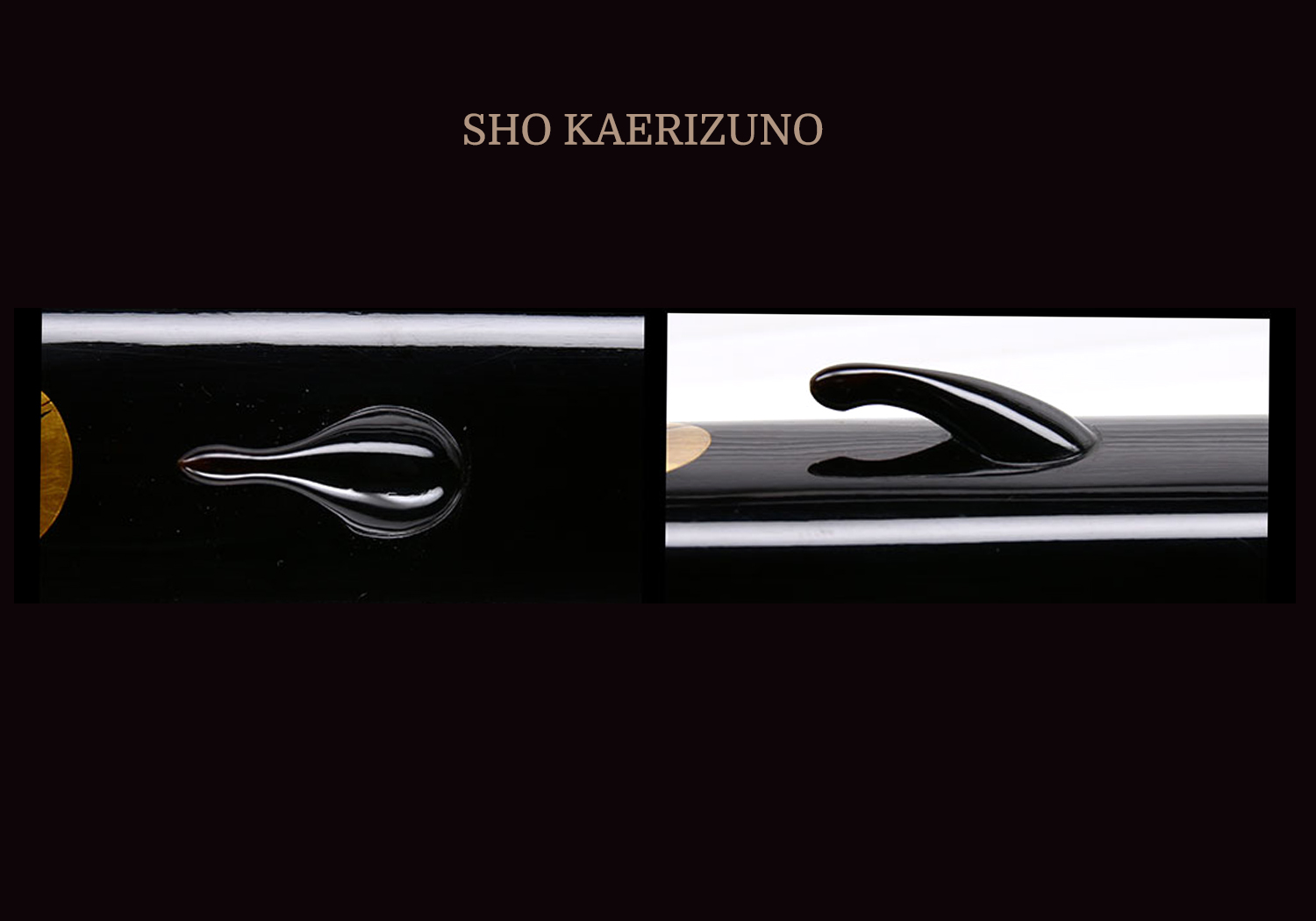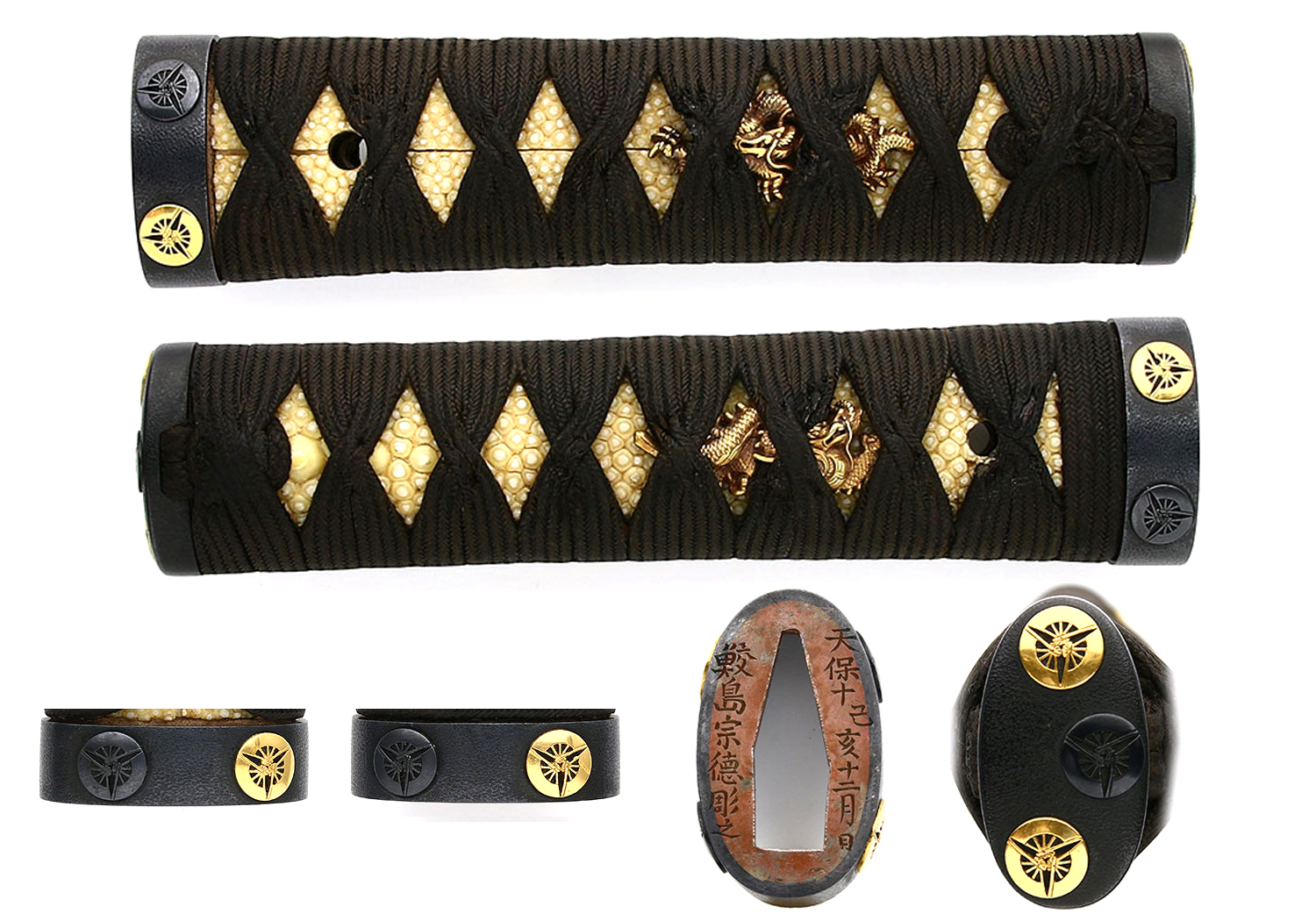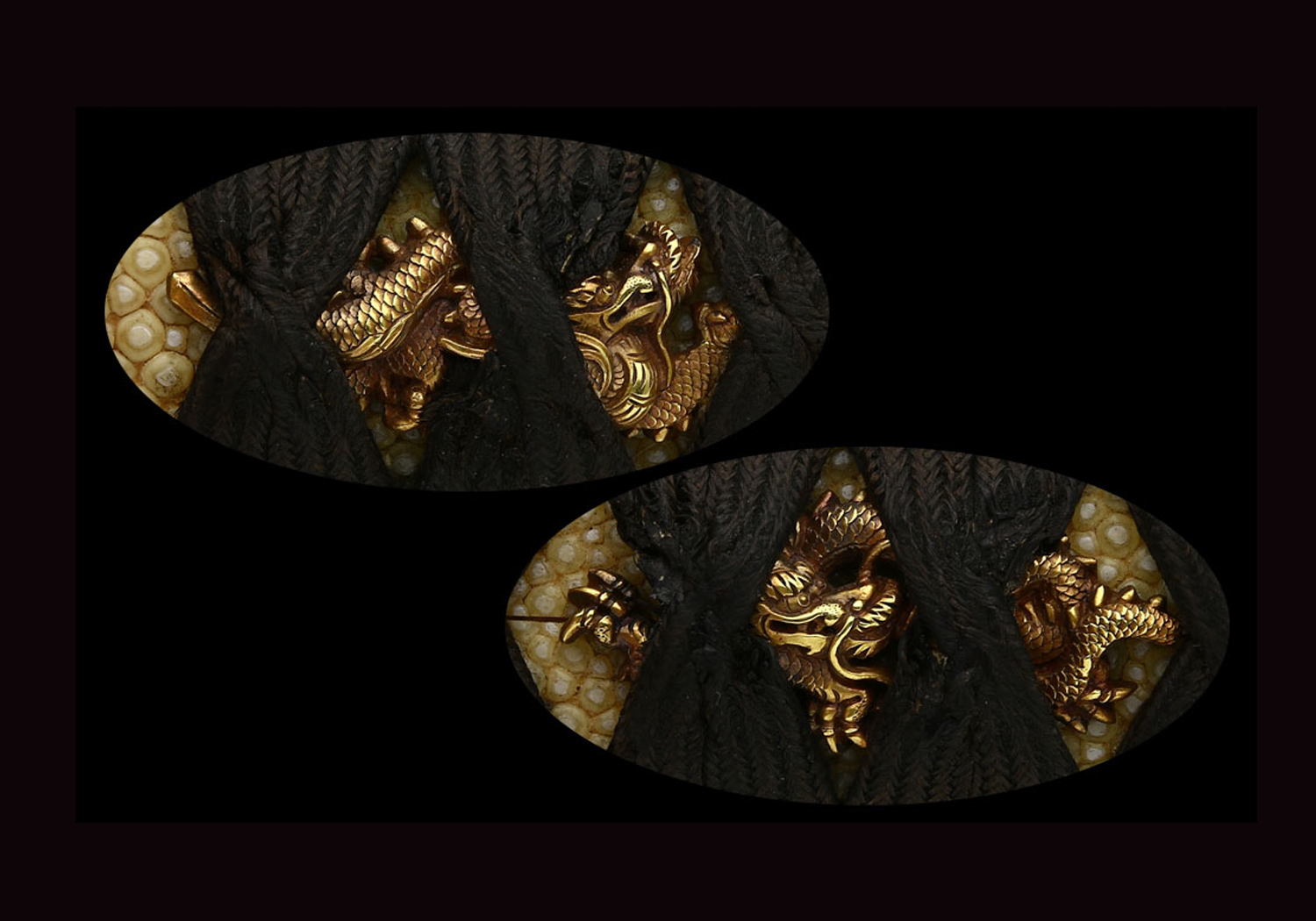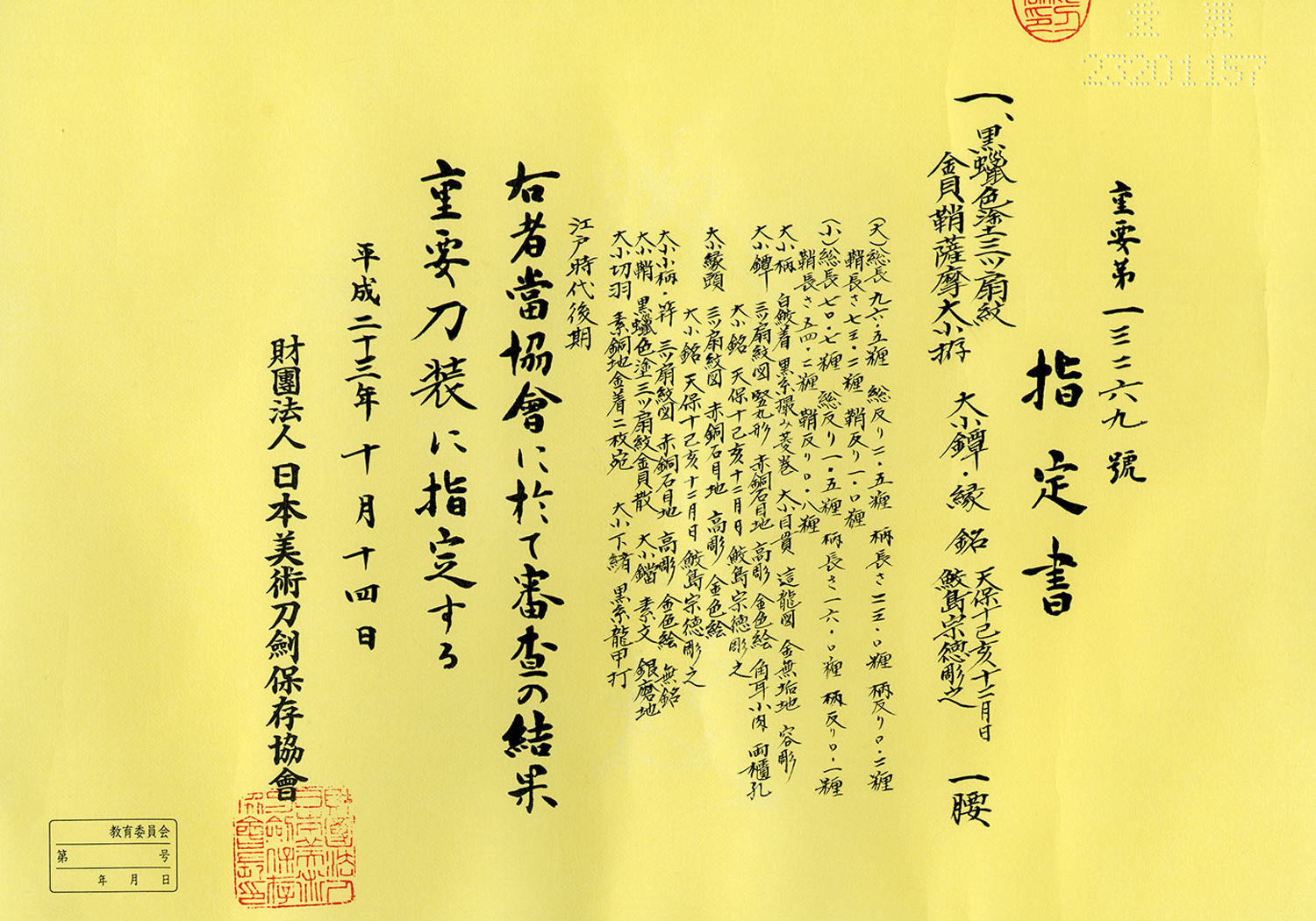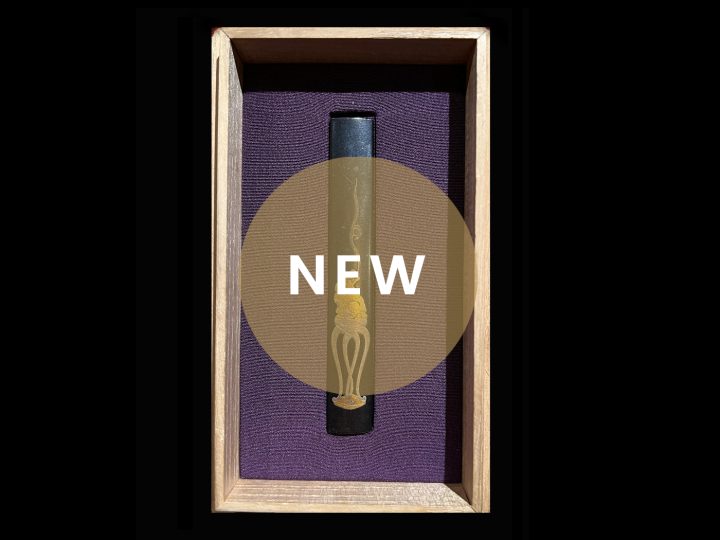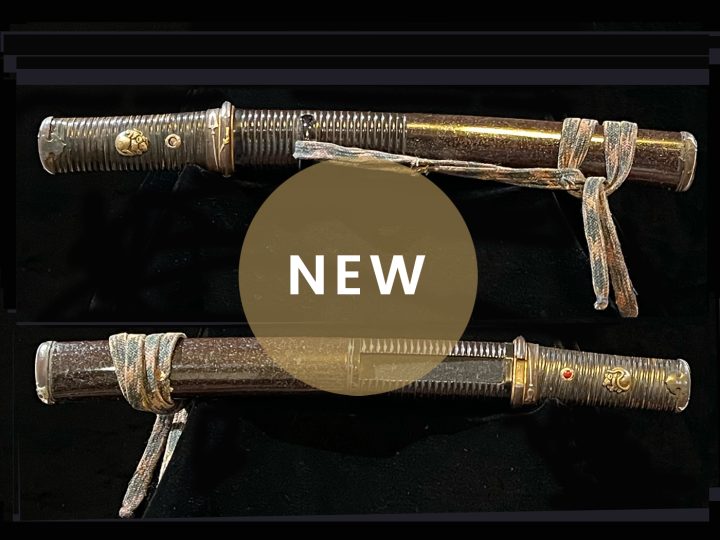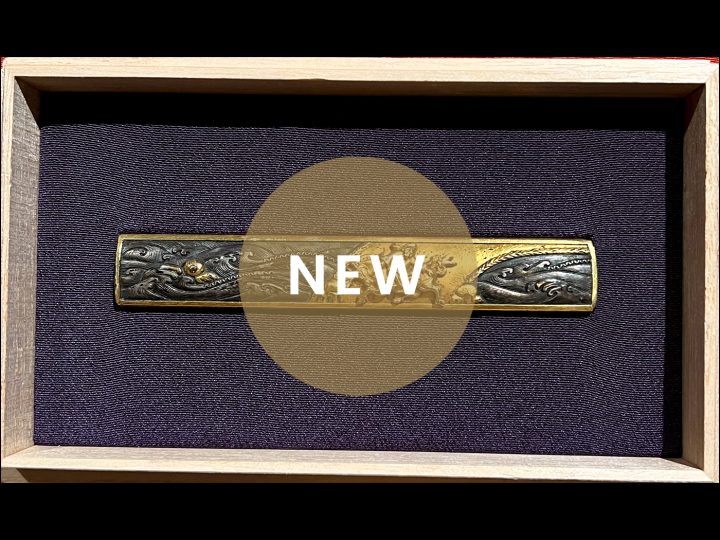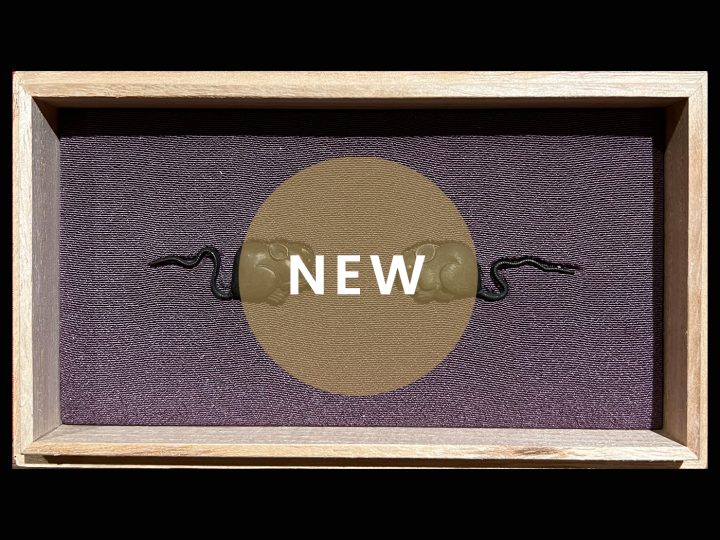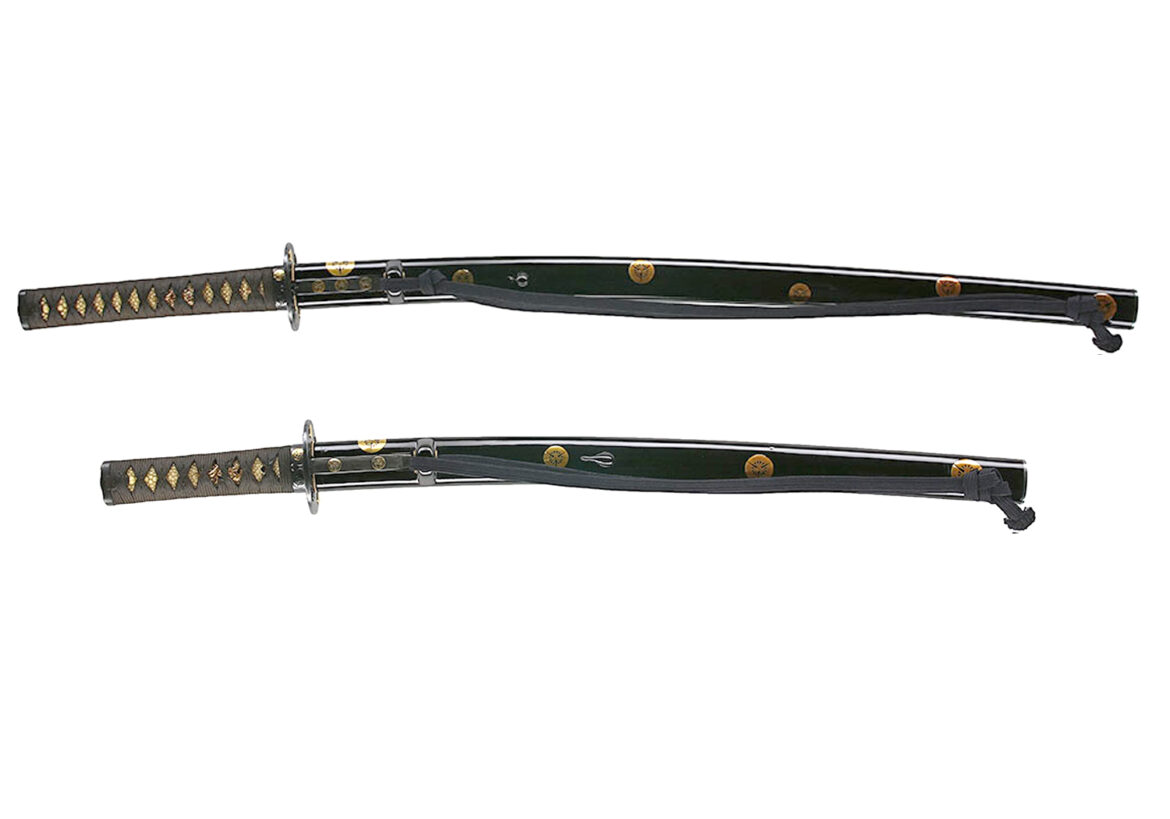
We are pleased to present this excellent and important Satsuma daishô koshirae from the 19th century. This is an excellent example of a formal daishô worn by a high ranking Samurai when he went to see his Daimyo or other bakufu officials. During the Edo period, there were strict rules as to style, shape, and type of acceptable fittings allowed on such koshirae. This daishô shows these required characteristics as they were incorporated into the koshirae of the Satsuma family retainers.
When Samurai is called to attend his lord in the castle, a daishô koshirae must be worn that conformed to the standards as they were set down by the Edo bakufu. There were strict rules as to style, shape, and type of acceptable fittings allowed on such koshirae. For example:
Saya: Saya should be plain black rôiro lacquer (high gloss)Katana says should be cut off straight at the end and the wakizashi saya should have a rounded end.
Tsuka: It must have white same wrapped with black ito (cord).
Kashira: It must be shakudo nanako or plain black horn.
Tsuba: It must be a plain shakudo tsuba (called a Kenjo tsuba).
It should be pointed out, however, that certain strong Daimyo, and especially tozama Daimyo (outside Daimyo), did on occasion take certain liberties with Bakufu regulations as a form of mild protest against the ruling Tokugawa family. This was especially true in the later Tokugawa era (Edo era), as the bakufu control over the country weakened.
This daishô belonged to a chief retainer of the Shimazu family who ruled the province of Satsuma from the end of the 12th century up until the Meiji Imperial Restoration in 1868. The retainer belonged to the Nirei (仁禮) family. We know this because of the profuse amount of mitsu-ogi family mon (three fans) that adorn this koshirae. This was the family mon of the Nirei house (仁禮).
This daishô koshirae is a rare and precious piece of history. Not only is it an excellent example of high quality Satsuma formal koshirae, but the tsuba and the fuchi/kashira are signed and dated by the artist, Samejima Munenori (鮫島宗徳). Munenori was a Satsuma artist and works by him, especially signed works, are very rare.
The daishô koshirae was awarded the status of Jûyô Tôsôgu in October of 2011. The translation of the certification is as follows:
Jūyō-tōsōgu at the 57th Jūyō shinsa held on October 14, 2011
Kuro roiro-nuri mitsu-ōgi-mon kanagai saya Satsuma-daishō-koshirae (⿊蠟⾊三ツ扇紋⾦⾙鞘薩摩⼤⼩拵) – Satsuma-daishō-koshirae featuring glossy black lacquer saya with gold nacre décor of three-fans crests daishō-tsuba and fuchi, mei: Tenpō jū tsuchinoto-i jūnigatsu hi – Samejima Munenori kore o horu (天保⼗⼰亥⼗⼆⽉⽇・鮫島宗徳彫之) – “Carved by Samejima Munenori on a day in the twelfth month of Tenpō ten (1839), year of the boar”
Measurements:
Dai: overall length 96.5 cm, overall sori 2.5 cm, tsuka length 23.0 cm, tsuka sori 0.2 cm, saya length 73.2 cm, saya sori 1.0 cm; shō: overall length 70.7 cm, overall sori 1.5 cm, tsuka length 16.0 cm, tsuka sori 0.1 cm, saya length 54.2 cm, saya sori 0.8 cm
Description:
Hinshitsu-keijō: both hilts covered with white same and wrapped tsumami-maki style with black braid; daishō-menuki depicting creeping dragons, of pure gold, in katachiboiri; daishō-tsuba depicting an arrangement of three-fans crests, in tatemaru-gata, of shakudō with ishime ground, and with takabori relief, gold iroe accents, a kaku-mimi with a little niku, and two hitsu-ana each, signed as quoted above; daishō-fuchi depicting an arrangement of three-fans crests, of shakudō with ishime ground and with takabori relief and gold iroe accents, signed as quoted above; daishō-kozuka and kōgai depicting an arrangement of three-fans crests, of shakudō with ishime ground and with takabori relief and gold iroe accents, unsigned; daishō-saya in glossy black lacquer and with gold nacre décor of an arrangement of three-fans crests; daishō-kojiri undecorated and of polished
silver; two daishō-seppa of gilded suaka; daishō-sageo black and braided in ryūkō technique with accented center.
Era: Late Edo period
Explanation :
A daishō is a pair of uchigatana and wakizashi and the practice of wearing such a pair of swords is assumed to have emerged at the end of the Muromachi period. With the Edo period, a formalized daishō-koshirae came into existence which was used at an attendance at a castle and which was referred to as kamishimo-zashi (裃指) or banzashi (番指), The official code of the Bakugi Sankō (幕儀参考) defines such a formal daishō-koshirae as having glossy black-lacquer saya, with the sayajiri of the dai being straight and that of the shō round, with the hilts being covered in white same and wrapped hishimaki-style with black braid, with the kashira being of black-lacquered horn, and with the fuchi being of shakudō with either a nanako ground or a polished finish. The tsuba was proposedly a Kenjō-tsuba of polished shakudō and the mitokoromono first-class Gotō works. The only decoration should be family crests highlighted just in gold iroe and the sageo should be black braid, although for presentation purposes also purple sageo were used. Apart from the above mentioned official use however, daishō-koshirae were not regulated by the bakufu, but several interpretations emerged that are based on the banzashi regulations.
This is a Satsuma style daishō-koshirae with glossy black lacquer scabbards and fittings that are en suite decorated with an arrangement of three-fans crests. Kozuka and kōgai were added later, but fuchi/gashira and tsuba were made by the Satsuma-based kinkō artist Samejima Munenori (鮫島 宗徳). Dated works from the eras Tenpō (天保, 1830–1844) and Kaei (嘉永, 1848–1854) exist from Munenori, which inform us about his active period. The fuchi/gashira and tsuba are well made and a very valuable reference as only few works of this artist exist, in particular such that are dated.
This daishō-koshirae is overall of high quality and appears to have been inspired by formal bakufu mounts by also featuring elements that follow the style of Satsuma-koshirae. The family crest suggests that it was once a heirloom of the Nire (仁禮) family, which were chief vassals of the Satsuma Shimazu (島津) clan.

